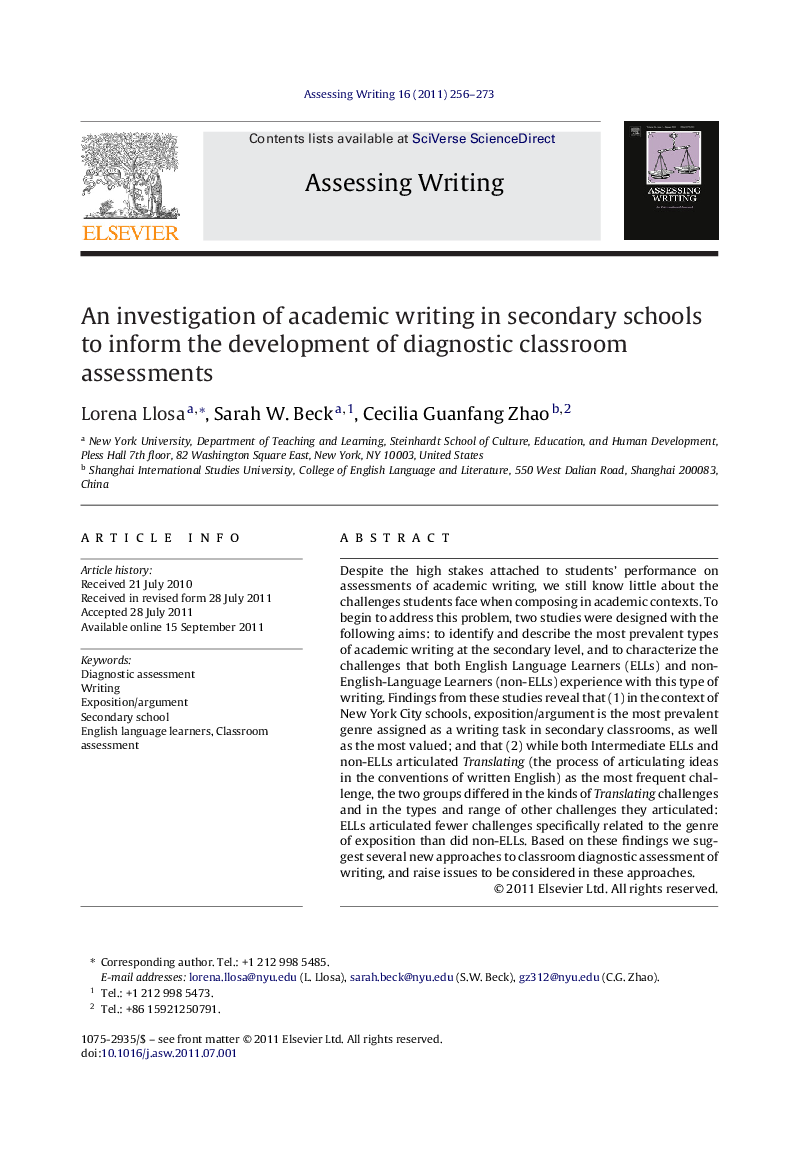| Article ID | Journal | Published Year | Pages | File Type |
|---|---|---|---|---|
| 344315 | Assessing Writing | 2011 | 18 Pages |
Despite the high stakes attached to students’ performance on assessments of academic writing, we still know little about the challenges students face when composing in academic contexts. To begin to address this problem, two studies were designed with the following aims: to identify and describe the most prevalent types of academic writing at the secondary level, and to characterize the challenges that both English Language Learners (ELLs) and non-English-Language Learners (non-ELLs) experience with this type of writing. Findings from these studies reveal that (1) in the context of New York City schools, exposition/argument is the most prevalent genre assigned as a writing task in secondary classrooms, as well as the most valued; and that (2) while both Intermediate ELLs and non-ELLs articulated Translating (the process of articulating ideas in the conventions of written English) as the most frequent challenge, the two groups differed in the kinds of Translating challenges and in the types and range of other challenges they articulated: ELLs articulated fewer challenges specifically related to the genre of exposition than did non-ELLs. Based on these findings we suggest several new approaches to classroom diagnostic assessment of writing, and raise issues to be considered in these approaches.
► We identify the most prevalent types of academic writing at the secondary level. ► We describe challenges that ELL and non-ELL students experience with writing. ► Exposition is the most prevalent and valued genre at the secondary level. ► ELLs reported fewer challenges related to the genre of exposition than did non-ELLs. ► We suggest several new approaches to classroom diagnostic assessment of writing.
